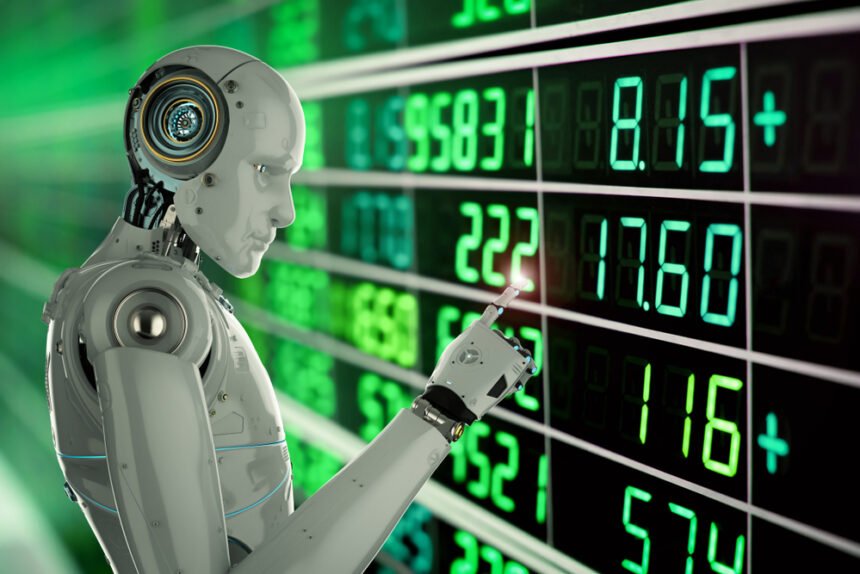Artificial intelligence is drastically changing the future of finance. Financial institutions spent over $10.1 billion on AI last year. One of the many ways that AI is being leveraged in finance is by helping improve the experience of investors.
Modern investors enjoy a much smoother trading experience than their predecessors. Thanks to the invention of the internet, everything from conducting trades to downloading comprehensive reports can be completed almost instantly. Tasks that previously took weeks now take only minutes, which has certainly encouraged the next generation of young investors. This is just one of the many ways that AI has changed the financial sector.
However, innovation never sleeps, and so the modern investing landscape is continuing to change (this time with the introduction of AI). Still, AI—as a whole—is a technology that’s still in its infancy, sans regulations and general standards. Does implementing AI & AI data into the modern trading world actually provide any benefits? In this article, we aim to find out!
The Issues With the Traditional Approach
The market is constantly changing, which is why many professional analysts make careers out of studying it. By analyzing, identifying, and predicting these trends, analysts are able to help their clients minimize risk while enjoying large returns. AI has significantly helped investors in this regard. To a certain extent, prices are partially based on the general public’s interactions and perception of the value of an asset. Human analysts are able to incorporate these emotional responses into their stock predictions, combining them with trend data to produce relatively accurate analytics. However, making these calculations can be extremely time-consuming and—as humans are prone to errors—aren’t always accurate. Unfortunately, even the same trends can have different interpretations from multiple analysts.
The Modern Approach
Modern analysts don’t complete all of their calculations using pen and paper; they take advantage of the various tools at their disposal. There are many different software solutions designed to aid analysts and investors alike, allowing them to compile large amounts of data in a short amount of time. These programs are often able to represent data in a number of different ways—such as line graphs or candlestick charts—which makes it easier to process the data. Nonetheless, manually analyzing data is still somewhat time-consuming, even with the aid of software solutions. That’s why many companies have started to implement AI data into their investing strategies.
The Rise of Robo-Advisors
For years, many financial experts pushed the idea of investing early, yet actually getting started required a lot of effort. Even after stocks and other assets could be purchased through an online brokerage, seeing consistent returns still required some knowledge of the stock market. Fortunately, the first robo-advisors were created in 2008.
Robo-advisors were a unique service that simplified investing for the masses. Rather than needing to make individual investments, analyzing the markets, and actively trade, users were able to simply deposit money and wait. The robo-advisor handled the actual investment process, using AI data analysis and automation to complete trades and react to market changes. These days, consumers have plenty of robo-advisors to choose from, making it easy for nearly anyone to start investing.
Advantages & Disadvantages of AI Data
The main difference between AI data and human data is that AI data lacks an emotional component. In some situations, this can be a disadvantage (especially for short-term trading). For example, current political or PR issues (and the resulting consequences) can be emotionally analyzed by a human. This emotional insight allows them to incorporate public perception into their predictions and make proactive adjustments. As AI data is based entirely on statistics and doesn’t consider emotions, a robo-advisor can only react: it’s incapable of making proactive choices based on emotional responses from shareholders.
The flip side is that a system relying solely on AI data doesn’t make emotionally charged decisions. While a human may start to reconsider their investments as a low drags on, the AI is only considering the historical data that it’s used to make its decisions. Every decision made is based solely on a comprehensive analysis of the past, which is far more inclusive than one produced by a human analyst.
An Improved Consumer Accessibility
Another benefit of incorporating AI data into investing is improved customer accessibility. Investing early allows one to take full advantage of compound interest, but the rates and fees charged by human advisors can make hiring one unrealistic. Robo-advisors are able to provide portfolio management services for a fraction of the cost, making them much more affordable to potential young investors. While their average returns—which tend to average between 11.7% to 13.4%—aren’t as impressive as alternative investment options, robo-advisor offer one of the easiest ways to start building a portfolio on a limited income.
AI Data in the Future
The technology may still be relatively new, but it’s reasonable to anticipate that modern AI will continue to become more popular in the future. While it will likely never entirely replace human analysts, it will certainly be prominent in the market moving forward. With uses for everything from personal finance management to market tracking, we anticipate that options will only expand as the technology improves.

